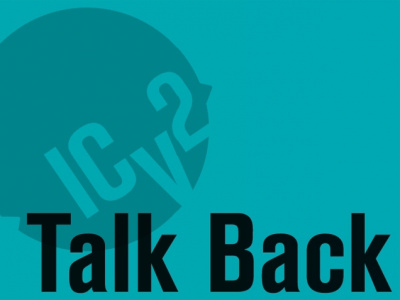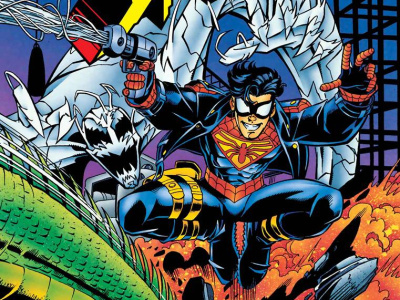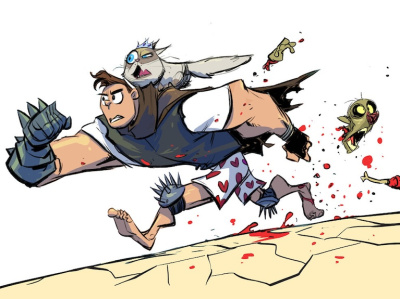
'I Think I Can Manage' is a weekly column by retailer Steven Bates, who runs Bookery Fantasy, a million dollar retail operation in Fairborn, Ohio. This week, Bates looks at the top comics from 2005 and finds the common element.
Diamond Comic Distributors has published its compiled 2004 industry statistics documenting orders of comics, magazines, graphic novels, and manga, and there are few surprises. Dominating the 2004 Top 100 Comics are DCs and Marvels, which would've swept the list save for Dark Horse's Conan #1 (a character formerly published by Marvel). Though smaller alternative publishers offered many great books last year, none made a dent in the monthly periodical monopoly of the Big Two, though several trade paperbacks and graphic novels placed well on that list (including a one-shot based on the TV show 24, the initial Complete Peanuts hardcover, and an issue of Uncle $crooge, as well as numerous Hellboy and Star Wars trades). Variety may be the spice of life, but monthly comic book buyers are apparently more interested in 'comfort food.' The same series appear again and again and again on the Top 100: Superman, Astonishing X-Men, Superman/Batman, X-Men, Green Lantern: Rebirth, Avengers, Identity Crisis, and any Marvel with the word Ultimate in the title. What does this say about the state of our industry?
On the surface, it may appear that readers are sticking with the tried and true, following the exploits of established characters and avoiding anything untested. At prices ranging from $2.25 to $3.95, who could blame them? This could be a warning to small press publishers competing for retailer rack space and consumer cash. As comic book prices continue to escalate, customers are forced to be more selective, more discriminating in their buying, seeking the biggest bang for their buck(s). With consistently higher quality, both in production values and stories, Marvel and DC are perhaps perceived by comics buyers as a better bargain (which is not to say that Dark Horse, Image, Devil's Due, IDW, Gemstone, and the now-defunct Dreamwave didn't all publish great-looking comics in 2004).
The illusion of all this is that nearly all of the comics in the Top 100 do not in fact represent anything consistent or stable or safe. The top-seated Superman # 204 was part of a visual and stylistic relaunch by artist Jim Lee and writer Brian Azzarello. Lee performed much the same hat trick with Batman: Hush the year before, infusing an old character with new life-and new readers-by bringing his 21st century graphic style to a tired franchise. Despite complaints from fans that Azzarello's story might be too cerebral (i.e., not enough punching), Superman took not only the # 1 slot, but #'s 6, 9, 20, 30, 38, 42, 52, and 75, as well.
Another DC title that soared in 2004 was Superman/Batman, written by Jeph Loeb and drawn (s-l-o-w-l-y) by Michael Turner, a series which took six of the top 20 spots. Like Lee, Turner is a fan-favorite artist, and his interpretation of the revamped Supergirl kept readers coming back for more, despite long delays between issues. A relatively new series, 'SuperBat' (as it is widely known) is a fresh take on the old World's Finest title, and by introducing a new-but-strangely-familiar Supergirl to the Superman mythos, it scored some of the industry's finest sales in 2004.
Marvel also did some renovating, buffing-up the X-Men family and starting the Avengers over from scratch. In the hands of wunderkind Joss Whedon, Astonishing X-Men # 1 took the # 5 berth, luring in readers with stories evoking the glory days of Chris Claremont and John Byrne. Aided and abetted by artist John Cassady, AXM made the charts seven times. Brian Michael Bendis' dramatic disassembling of Avengers (and his subsequent reassembling of the team in New Avengers # 1) scored well with fans, who watched breathlessly as the body count escalated and the roster dwindled until the traitor within was finally revealed. Bendis' radical story of death and betrayal mirrored one of the biggest events of the year, DC's Identity Crisis, written by crime novelist Brad Meltzer. Avengers 'Disassembled' and Identity Crisis dealt with similar themes, and both resulted in changing readers' perceptions about the characters and the universes in which they operate.
As I see it, what was selling in 2004 was change. Neil Gaiman's 1602 gave us a Marvel Universe set 400 years in the past; Green Lantern: Rebirth brought Hal Jordan back from the dead; Secret War showed us a grittier side of Marvel than we were used to seeing; even Dark Horse's Conan was a new look at an old familiar face. And nearly a third of the list (31 titles) were set in Marvel's Ultimate Universe, an alternate cosmos where people talk more realistically, have more genuine motivations, and look like Samuel L. Jackson and Brad Pitt--a reality built on the premise that the original Marvel Universe has immense untapped potential and a whole lotta baggage that needs to be scuttled. In other words, it's all about change.
DC Comics has been entertaining readers for nearly seven decades, and Marvel has been around for over 40 years itself. These companies have built a strong and loyal following over the years, writing and drawing stories about characters we both identify with and idolize, heroes we adore, villains we despise, and everyday Joes in which we see our own reflections. Things can get pretty stale after so long a time, and the publishers recognize the need to reinvent themselves every so often to remain relevant for the new reader and to keep things fresh for long-time fans. 2004 was a year of change, of transition, of metamorphosis, a year both DC and Marvel planned to recharge their batteries and energize the fans. Ultimately, they succeeded.







